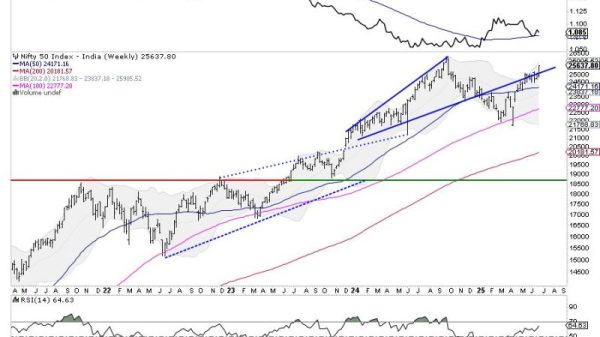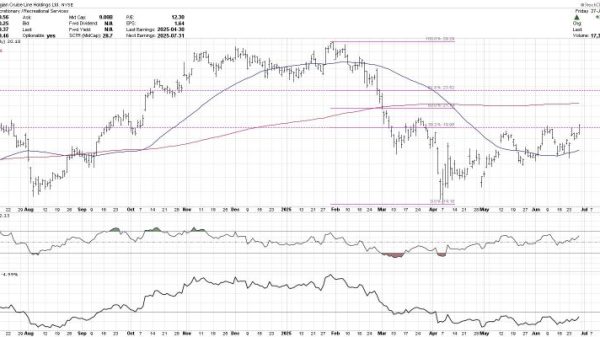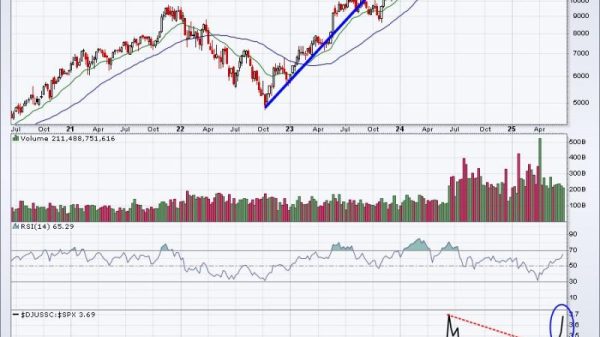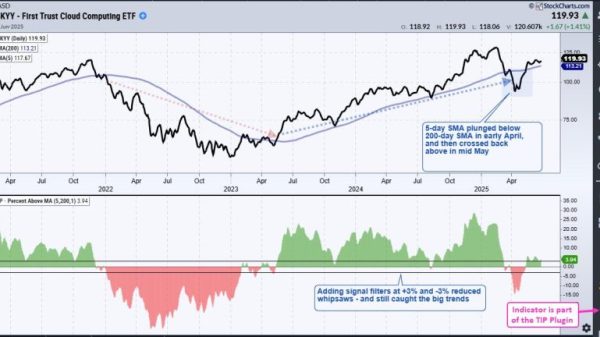In 2020, Joe Biden won the national popular vote for president by 4.5 percentage points, a seemingly safe margin that should have easily put him in the White House.
But under the hood, the presidential race was extremely close. In fact, if just 42,000 votes in three battleground states — Arizona, Georgia and Wisconsin — had gone differently, Biden would have lost his electoral vote majority.
Instead, Biden not only won the popular vote but also 306 votes in the electoral college, a convergence that has not always happened over the past 24 years in the U.S. political system.
And given what we’re seeing this year in the data and in The Washington Post’s election model, it may not only happen again in 2024 — but be easier for Democrats to clinch the electoral college and win the White House with a smaller popular-vote margin than in recent years.
Here’s why.
To better understand how elections are won, one of the best signals that political data scientists use are tipping-point states.
To identify the tipping-point state in 2020, The Post’s elections data team ranked all U.S. states and D.C. based on the margin by which Biden won them — that is, he won D.C. by the largest margin, followed by Vermont, Massachusetts and so on, adding up how many electoral votes each state was worth as we went. The state that took Biden over 270 electoral votes was the one we were looking for — the tipping-point state. In 2020, that state was Wisconsin — and it was decided by only 0.6 percentage points.
In recent elections, we’ve seen a pattern that hasn’t helped Democratic presidential nominees who lead in the national popular vote. They have notched a narrower edge — or perhaps no lead at all — in the tipping-point state, which sometimes means the Democratic candidates don’t win the electoral college.
This happened to Hillary Clinton in 2016 and to Al Gore in 2000. Both won the national popular vote by about 2 and 0.5 percentage points but lost the tipping-point states — Wisconsin and Florida — and, thus, the election.
In other words, in those elections, Republicans did better in the electoral college than in the popular vote. The difference between the national popular-vote margin and the margin in the tipping-point state is called the electoral college bias.
Because of this recent history, we’ve come to assume that Republicans have a baked-in electoral college advantage. We think Democrats need to win the popular vote with some buffer, maybe two or three percentage points, to win the presidential election.
But in 2024, things may be changing. That’s because Democrats are performing less well in populous, blue states while simultaneously not losing any ground in the close states that decide the election.
The presidential race has dramatically re-formed after Biden decided not to run again and Kamala Harris, his vice president, became the Democratic nominee and will face Donald Trump in November.
According to The Post’s polling average, the national popular vote between Trump and Harris is currently tied. At the same time, if the election were held today and the polls (and our average) are right, Michigan would be 2024’s tipping-point state (but that might change as we get closer to November and get more polls).
According to our polling average, which ingests quality polls and past voter data, Trump is ahead in Michigan by a single percentage point. With a tied national polling average, our model shows the current electoral college bias as favoring Republicans by a single percentage point.
This is an average-size electoral college bias, relative to elections going back to 1948, and significantly smaller than the one we saw in the last two election cycles.
That means that if the national environment continues shifting toward Harris, our model shows she would not only win the national popular vote but also squeak by in Michigan. Significantly, the polling data has shown real movement toward Harris since she jumped into the contest on July 21. She has improved by nearly two percentage points in every swing state since becoming the candidate.
So why is Republican’s electoral college advantage shrinking?
It’s important to remember that the electoral college bias hasn’t favored just Republicans in recent years. As recently as 2012, Democrats actually had an advantage. Barack Obama won the popular vote by 3.9 percentage points — but he also won Colorado, which was the tipping-point state, by 5.4 percentage points. So the electoral college bias in 2012 was 1.5 percentage points in favor of Democrats.
In more recent elections (2016, 2020), the bias has grown toward Republicans. That’s because Democrats have racked up large popular-vote margins in populous states such as California and New York but didn’t necessarily win over voters in the states that decide elections, such as Wisconsin.
Republicans also win populous states such as Texas and Florida, but by smaller margins. But in 2020, Democrats triumphed in California by 5 million votes and in New York by nearly 2 million votes, while Republicans won Texas and Florida by under 1 million votes.
In 2024, paradoxically, Democrats are doing slightly less well in the really populous states.
According to a recent Siena College Research Institute poll, Harris leads Trump in New York by 14 percentage points — significantly less than the 23 percentage points by which Biden won the state in 2020. We don’t have any recent polls in California, but the most recent RealClearPolitics average before Harris climbed to the top of the ticket showed Biden winning the state by 22 points. That’s still a lot, but less of a landslide than the 29 percentage points by which he triumphed in 2020.
Harris widens Democrat advantage to 14 points over Trump in New York. Biden had led by only 8.#NewYork #SienaPoll #SienaNewYorkPoll #SNY https://t.co/nmmlw4GW66
— SienaResearch (@SienaResearch) August 6, 2024
To be clear, the closing Democratic margins in blue, populous states predates Harris and Biden.
Other Democrats also have recently underperformed in those states. In 2022, California Gov. Gavin Newsom won reelection by 19 percentage points, five percentage points less than in 2018 and 10 percentage points less than Biden’s margin in the state in 2020. Similarly, New York Gov. Kathy Hochul beat Republican Lee Zeldin by only 6.5 percentage points in 2022, while her immediate predecessor, Andrew M. Cuomo, won by 23 percentage points in 2018.
What does all this mean?
If these trends continue — and that’s a big if, as there is no doubt this is a close race and polls do and can change — Harris could win the presidential race without as many votes as previous Democratic nominees. That is, as long as she can eke out a victory in the tipping-point state.





























